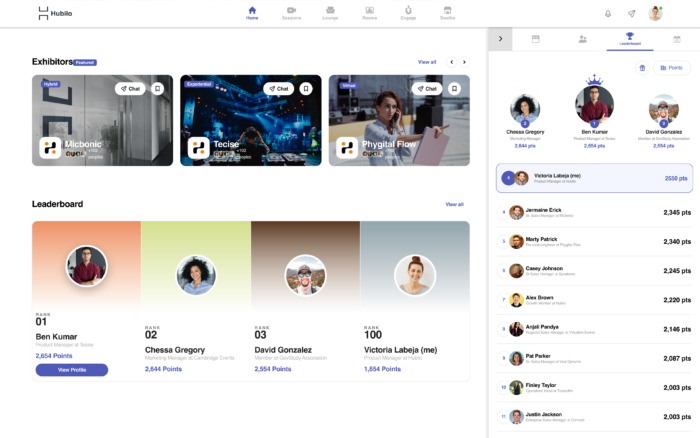All work, with play: Maximising employee engagement

Engagement matters now, more than ever. Maintaining connections and driving engagement does not rely on physical proximity alone, and businesses that have embraced this mindset have a greater chance of thriving in a COVID-19 endemic world.
It was a struggle initially. When COVID-19 first hit, most businesses scrambled in their digital transition since their daily interactions and work processes heavily relied on face-to-face interactions.
Employee engagement has always been essential to the workplace, but the shift to remote working in the past 18 months has only exacerbated its importance. Employers had trial and error phases where they tested different ways to keep their teams engaged and the business running amid a new working environment.
While digitalisation does bring a plethora of advantages, if businesses do not use it wisely and remain hyper-focused on work and no play, they also run the risk of wearing out their employees.
Apart from having difficulty drawing the line between work and personal life, many of us also experienced “video fatigue”. This is largely due to the numerous virtual meetings or webinars, especially large-scale ones, where communication mostly happens in a one-way manner.
There is rarely any engagement between the speakers or even co-attendees and, in turn, this can stifle collaboration and impact the productive output of such meetings.
Fostering human connections is at the core of the events industry and engagement is the secret sauce to successful events. And we believe the same goes with businesses.
What engagement brings to the table
There are numerous benefits to effectively engaging employees. Having an engaged workforce translates to improved productivity where employees can generate new ideas and innovations. Employee retention will also increase, and turnover will be reduced.

“Having an engaged workforce translates to improved productivity where employees can generate new ideas and innovations.” – Vaibhav Jain, CEO and Founder of Hubilo.
Overall, a happier and healthier workplace, be it physical or remote, provides a good environment for everyone and sets the groundwork for business growth.
Gamification for businesses
In today’s hybrid working context, gamification is a valuable tool that employers can leverage to boost engagement in virtual meetings. A little healthy competition goes a long way. It can command the attention of attendees, inspire them to participate and engage, and promote collaboration.
However, introducing collaboration to smaller-scale meetings might require squeezing more of those creative brain juices, but larger meetings and internal events can lean on virtual event technology to apply scores to each user with a leader board updated in real-time.

And what is a game without a prize or a trophy? Virtual goodie bags can come in the form of online vouchers or discount codes that can be awarded to those who top the leader board.
When done right, this can be an effective method in making larger-scale events livelier and more productive, rather than bland, uninspiring one-way conversations.
Measuring meeting effectiveness
The clock is always ticking. Having a clear, concise agenda and circulating it ahead of a meeting is a way to ensure that no precious time is wasted. This way, attendees are aware of the purpose of each session and even come prepared with helpful inputs to make the discussion more fruitful.
Not all meetings, however, are effective. There is a need for employers to measure meeting effectiveness to understand if it was worthwhile and whether each person involved really needs to be included.
By evaluating each session, employers can identify and address the gaps, streamline the volume of meetings that employees are expected to attend and eventually prevent burnout caused by constantly jumping from one meeting to another. Giving employees room to breathe also enables them to focus more on their work.
Initiative is important. Employers must reach out and provide avenues for the attendees to voice out their ideas during the meeting. Proactively engaging them in a discussion is a good way to cultivate a free flow of ideas which, who knows, might even bring out the next ground-breaking thing you need.
The more, the better
There is no one-size-fits-all strategy in employee engagement. Engagement can be done in different ways, be it through gamification, mapping out the meeting agenda, or encouraging Q&As.
To understand what approach works best for the team, employers need to talk to their employees, directly gather feedback from the ground and take that into consideration when implementing workplace policies.
Future-proofing the workplace
Now is the time for a workplace revolution. With hybrid work as the new normal, businesses must rethink employees’ experience and leverage technology to overcome the challenges that come with a remote working arrangement.
It is encouraging to see that there are new technologies that have sprung and enabled businesses to enhance employee engagement. A virtual + hybrid event solution like Hubilo can even be utilised by employers for large-scale virtual town halls, for example.
All employers need, is the creative and innovative spirit to use technology to their advantage and create a happy and healthy culture with engaged employees working together to drive business growth.
Click here to learn more on how Hubilo can drive employee engagement in your organisation.
By Vaibhav Jain, CEO and Founder of Hubilo.



